Is my fig tree alive??
How to do the scratch test on any fig tree or cutting.
When the days start getting longer and the nights a little warmer, dormant fig trees will begin to show signs of life. The awakening occurs at different times across the globe. But when spring finally arrives, the buds of fig trees everywhere will begin to swell and soon leaf out. Here's what to do if yours don't.
The Scratch Test
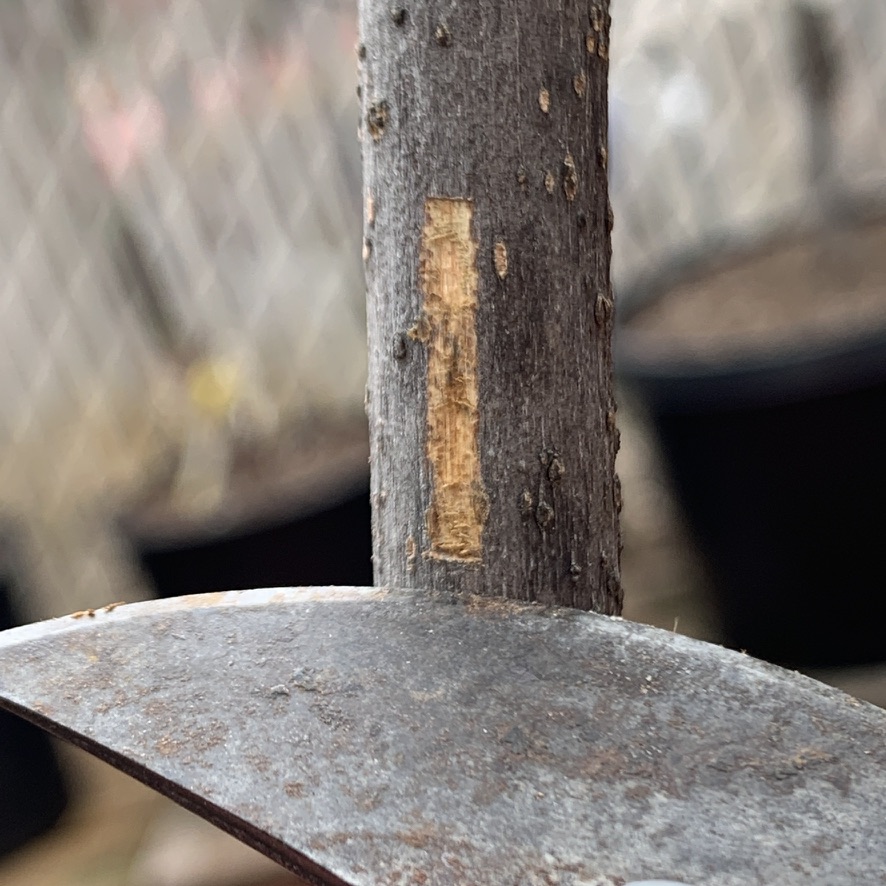

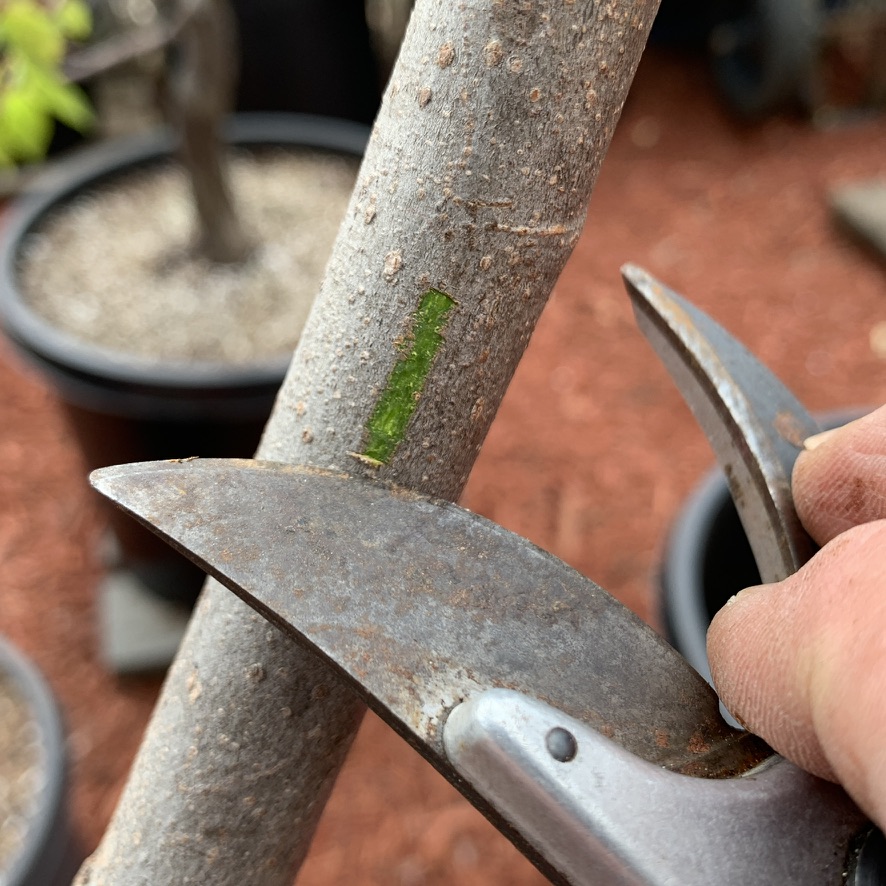 The scratch test is the best tool to determine if your fig tree made it through the winter and it's easy to master. All you need is the inside edge of a pruning blade or a smooth-blade knife. Your thumbnail will do in a pinch. The scratch test can be performed on in-ground or potted fig trees and even cuttings. Start with a clean and sharp pair of pruners. Place the blade or your thumbnail at an angle on the bark of the branch to be tested, press lightly, and with one stroke scratch a small area of the bark to reveal the cambium layer below. You're looking for wet, healthy, living tissue beneath the bark in the scratched area. The living tissue will be green or have a greenish hue. If the scratched area is dry, brown, or brittle it's an indication the area is dead. Move farther down the branch toward the trunk and try again. Keep moving farther down the branch or trunk until you reach live tissue. You can then prune off the dead branch(es).
The scratch test is the best tool to determine if your fig tree made it through the winter and it's easy to master. All you need is the inside edge of a pruning blade or a smooth-blade knife. Your thumbnail will do in a pinch. The scratch test can be performed on in-ground or potted fig trees and even cuttings. Start with a clean and sharp pair of pruners. Place the blade or your thumbnail at an angle on the bark of the branch to be tested, press lightly, and with one stroke scratch a small area of the bark to reveal the cambium layer below. You're looking for wet, healthy, living tissue beneath the bark in the scratched area. The living tissue will be green or have a greenish hue. If the scratched area is dry, brown, or brittle it's an indication the area is dead. Move farther down the branch toward the trunk and try again. Keep moving farther down the branch or trunk until you reach live tissue. You can then prune off the dead branch(es).  Sometimes, you may encounter a branch that won't give you a clear indication of life. The rule of thumb here is to simply wait until June 1st. If there are no signs of life by June 1st in all likelihood the branch is dead and you'll be able to remove it. When performing the scratch test you should avoid cutting a large wound into the tree. Large wounds take time and precious energy to heal. Press lightly with the knife or your thumbnail and a small scratch is enough.
Sometimes, you may encounter a branch that won't give you a clear indication of life. The rule of thumb here is to simply wait until June 1st. If there are no signs of life by June 1st in all likelihood the branch is dead and you'll be able to remove it. When performing the scratch test you should avoid cutting a large wound into the tree. Large wounds take time and precious energy to heal. Press lightly with the knife or your thumbnail and a small scratch is enough.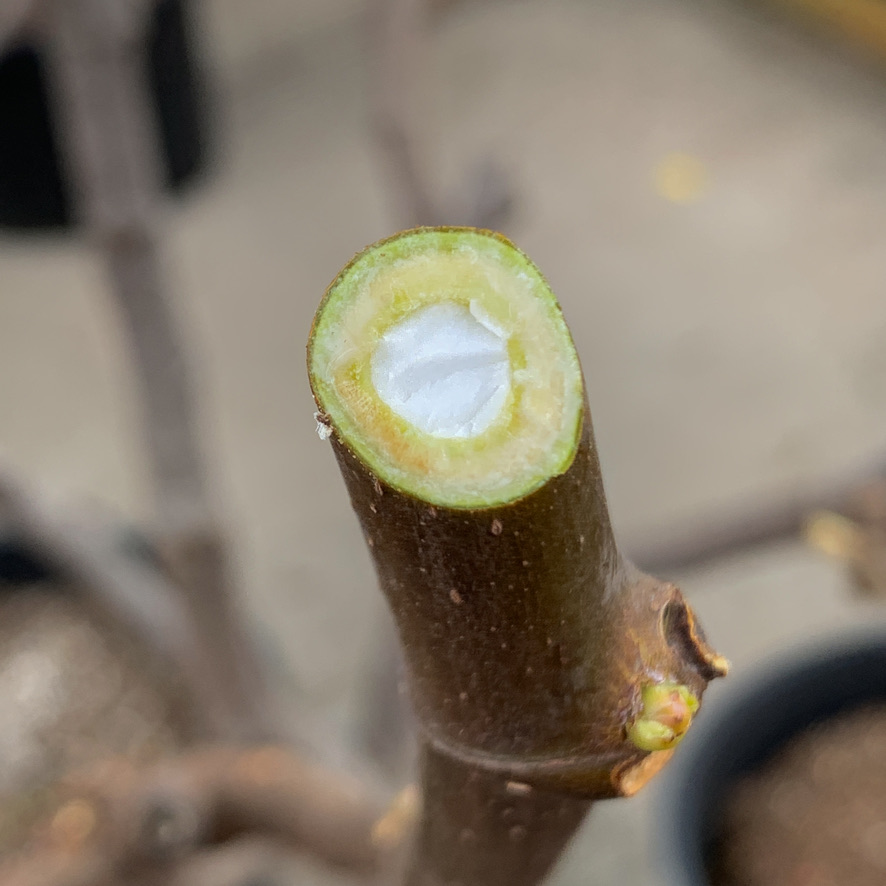
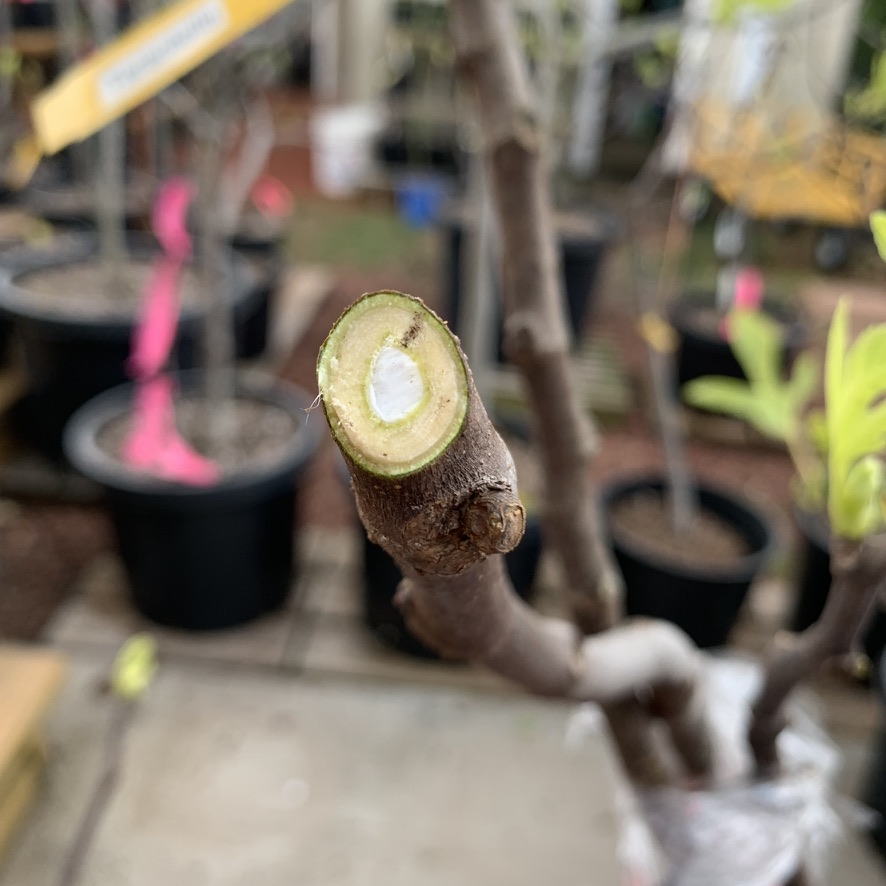
Grafted fig trees have become more popular. When performing the scratch test please be mindful of grafted varieties and try to determine the location of the graft. The top, grafted (improved) portion of the fig tree may have died leaving the living rootstock below. Always start at the tip of the grafted variety and test moving toward the trunk. Most fig trees have tons of vigor so If the grafted portion has died you may still be left with viable rootstock.
Pruning to check for living tissue
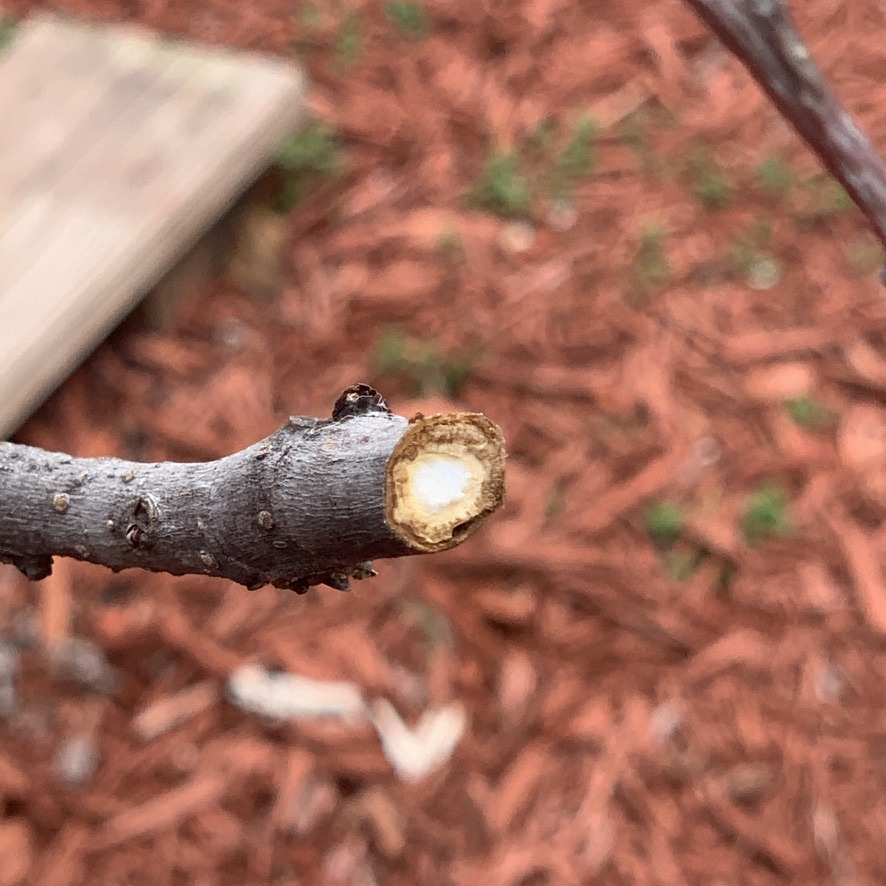
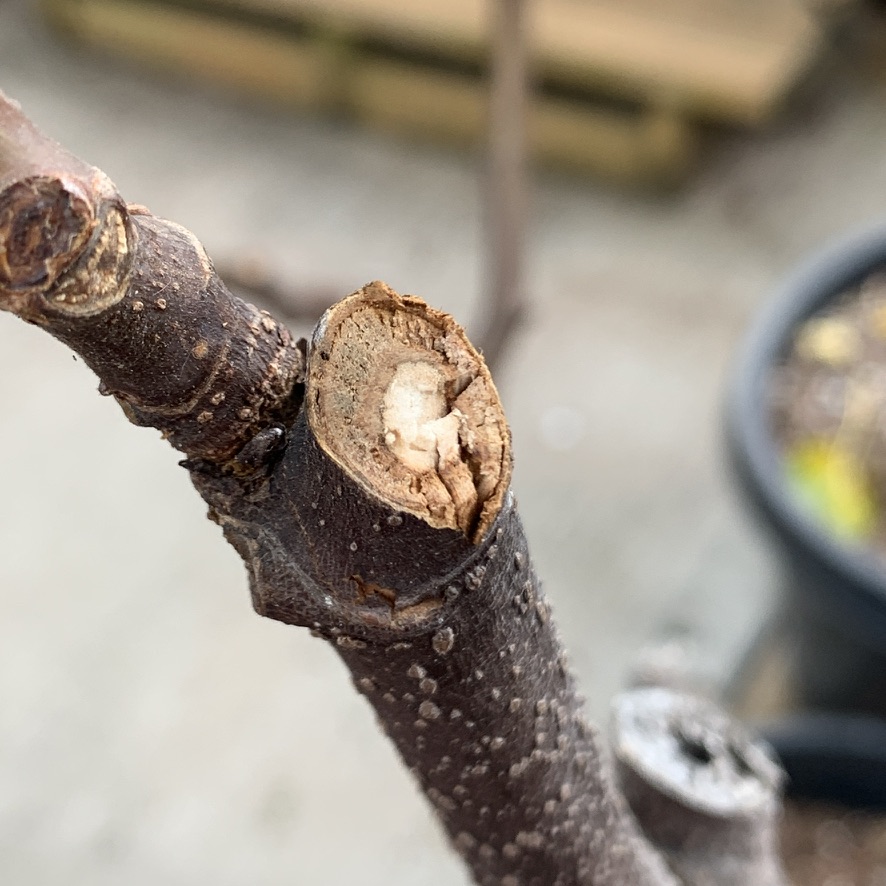 Sometimes fig branches will play possum and I've been pleasantly surprised many times. A branch that clearly looked dead in early spring suddenly jumped back to life as soon as temperatures rose. That's the reason for the June 1st rule. But there may be a dry, crusty branch that you simply want to prune back to living tissue. Start with a clean and sharp pair of pruners. Start from the terminal bud of the branch and work your way back to the main branch or trunk. Clip a bit at a time with your pruners, until you reach healthy wood with green cambium.
Sometimes fig branches will play possum and I've been pleasantly surprised many times. A branch that clearly looked dead in early spring suddenly jumped back to life as soon as temperatures rose. That's the reason for the June 1st rule. But there may be a dry, crusty branch that you simply want to prune back to living tissue. Start with a clean and sharp pair of pruners. Start from the terminal bud of the branch and work your way back to the main branch or trunk. Clip a bit at a time with your pruners, until you reach healthy wood with green cambium.
Now that you know how to check to see if your fig trees are living, it's also important to know that, if they are still dormant, they simply need more time. In-ground fig trees may be different from potted trees and all will be different in various climates. Each year, the timing of seasons and the weather are slightly different. Fig trees are sensitive to the seasons and will always wake up when they’re ready.
